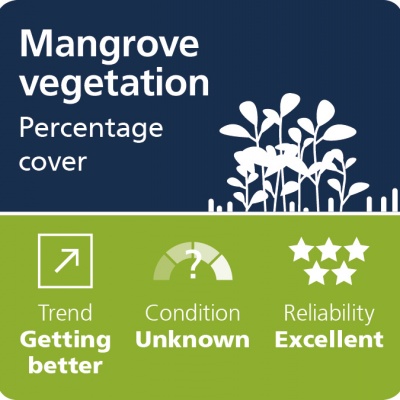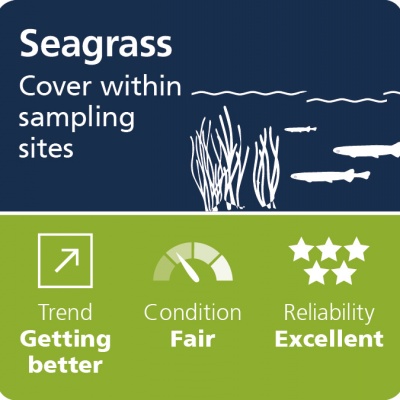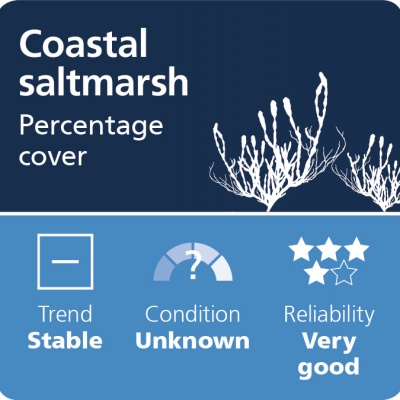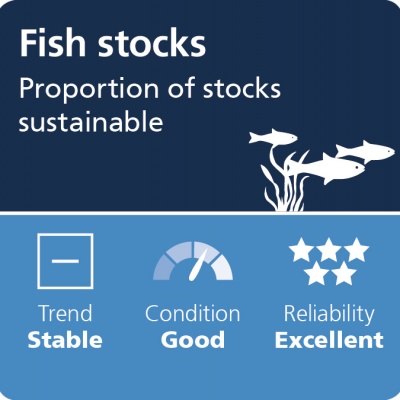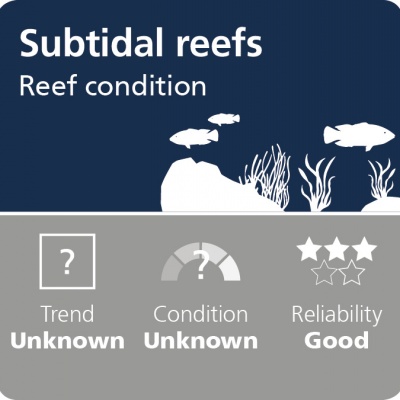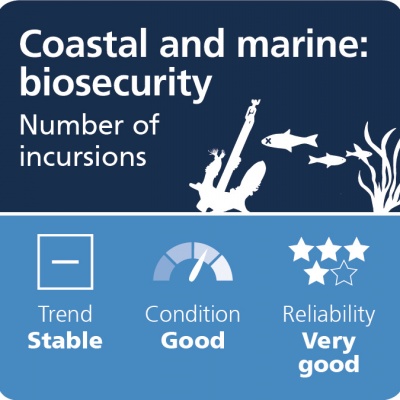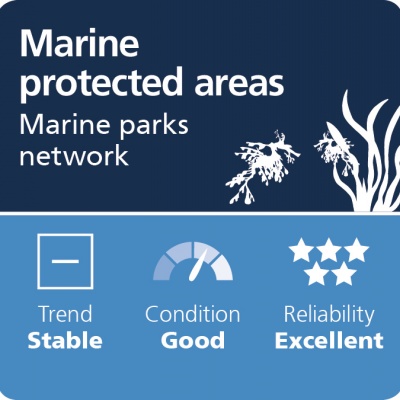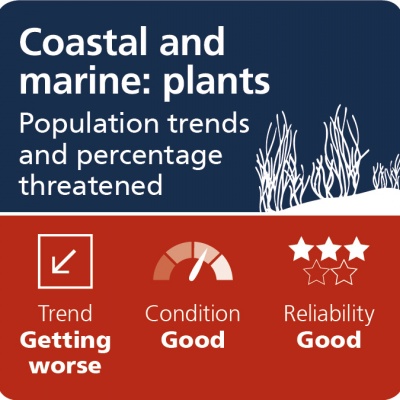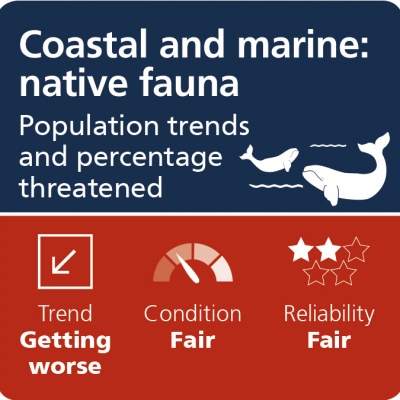Changing state of the coast
Pressures have varying degrees of impact on the state of the SA coast and its ecosystems, species and processes, including some that are positive. The cumulative impact of multiple threats, including pollution, resource use, habitat modification, and pests and diseases, is amplified by the impacts from climate change.
Similar to inland waters, there is a direct correlation between human development and ecological health of the coast – typically the more developed, the less healthy. Pollution and nutrient concentrations increase as runoff makes its way to the sea, where the impacts are further amplified by other sources, such as treated wastewater.
The SA Government has developed trend and condition reports for 9 key coastal and marine features – subtidal reefs, seagrass, coastal saltmarsh, mangrove vegetation, coast and marine plants, coast and marine animals, marine parks, fish stocks and biosecurity (Figure 57). The current condition of these features is variable, with 2 features rated as 'good', 2 as 'fair' and 4 as 'unknown'. Long-term trends were also variable, with 4 features showing a 'stable' trend, one 'getting better', 2 'getting worse' and one rated as 'unknown'.
In the last 5 years since the 2013 SOER, marine parks have improved, coastal saltmarsh and seagrass have remained stable, mangrove vegetation has stabilised following a long-term increasing trend and the majority of fish stocks are classified as stable.
Figure 57: Trend and condition reports for coastal and marine areas
The report card on seagrass is based on the cover of 2 seagrass species within sites assessed by the EPA as part of its aquatic ecosystem condition program.
Aquatic ecosystem condition
Since 2010, the EPA has undertaken 390 aquatic ecosystem condition assessments at 289 nearshore marine sites, using a 6-tiered condition rating system, ranging from ‘excellent’ to ‘very poor’, to arrive at an overall condition for each biounit. These assessments evaluate the condition of nearshore ecosystems and identify pressures that may have an impact on their condition and management actions that are currently underway to help address the pressures. The EPA has published a methods report that explains this approach in more detail.
The condition of SA’s nearshore ecosystems is generally good, with 83% of areas in the ‘good’ to ‘excellent’ range and only 6% rated as ‘poor’. No areas were assessed as ‘very poor’. Figure 58 shows the distribution of condition rating over the 6 categories.
 Figure 58: Proportion of assessments in each condition category (%)
Figure 58: Proportion of assessments in each condition category (%)
Not surprisingly, the areas in best condition are generally located away from human interference and coastal development, where they are least exposed to nutrient enrichment from activities such as wastewater and stormwater discharges, sea cage aquaculture and dredging. Particularly healthy sites are located throughout the West Coast of SA, as shown in Figure 59.
 Figure 59: Proportion of assessment condition with each bioregion (%)
Figure 59: Proportion of assessment condition with each bioregion (%)


